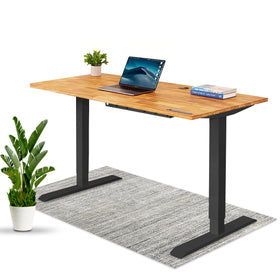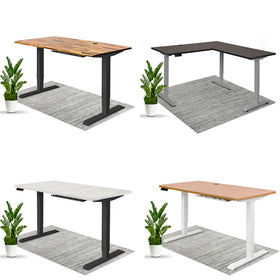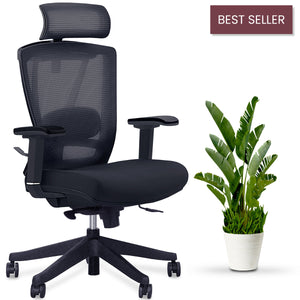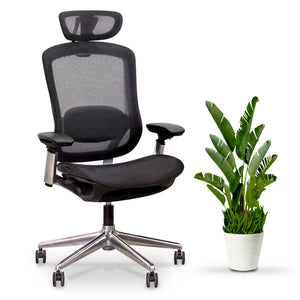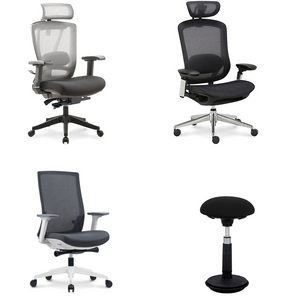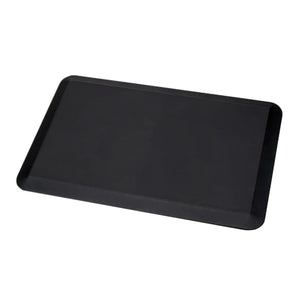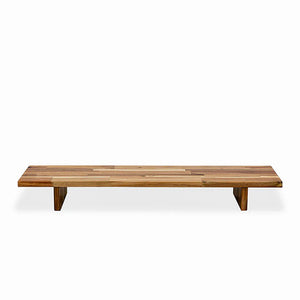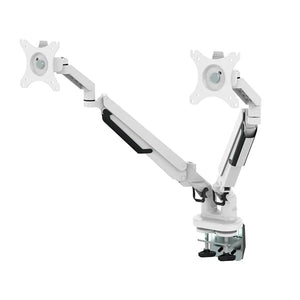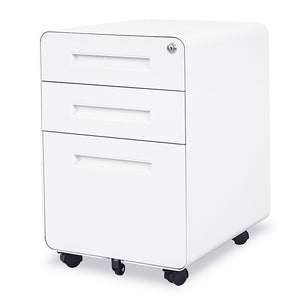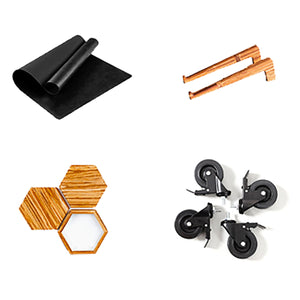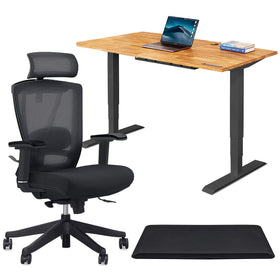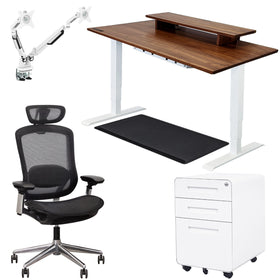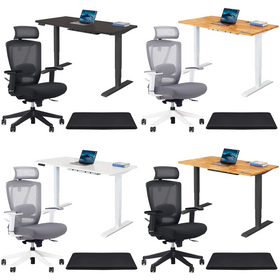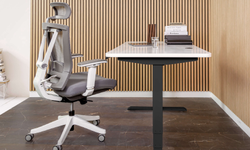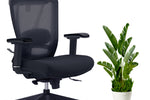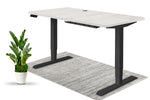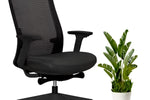-
Leather vs Mesh Office Chairs: The Pros and Cons April 11, 2024
-
7 Easy Soundproofing Hacks for Your Home Office April 2, 2024
-
How Prolonged Sitting Silently Damages Your Health March 21, 2024
-
How to Clean & Maintain Solid Wood Office Furniture March 7, 2024
-
AeryChair - Ergonomic Chair530 CAD
-
Standing Office DeskFrom835 CAD
-
GrinChair - Ergonomic Chair380 CAD
-
Home Office Standing DeskFrom715 CAD
Choosing Between Composite and Solid Wood Standing Desks
In recent years, the rise of adjustable standing desks across Canada and the US has addressed the growing concern of a sedentary lifestyle that often accompanies office work. These desks have garnered significant popularity due to their well-documented benefits, which encompass increased energy levels, improved posture, and overall well-being. With the increasing demand for standing desks, there's a corresponding surge in the variety of materials used to construct them. Two particularly popular choices in this landscape are solid wood and composite wood standing desks.
At EffyDesk, we understand the importance of offering a diverse selection of premium standing desks to cater to our customers' unique preferences. Our range includes composite and 100% real wood standing desks. Composite tabletops, despite their visual resemblance to solid wood, are crafted by blending various hard and soft woods, which are then fused together using resin.
Let’s delve into the key differences between these materials, helping you gain a comprehensive understanding that will empower you to make an informed decision when selecting the ideal standing desk for your specific needs. Our goal is to provide you with valuable insights to make the right choice that aligns perfectly with your requirements and preferences.
Appearance
When choosing a standing desk for your workspace, aesthetics are a crucial factor to consider due to the longevity of these products and their significant presence in an office. When deciding between a composite standing desk and a solid wood standing desk, most shoppers tend to lean towards the aesthetics of solid wood. These solid wood tabletops are admired for their timeless, elegant appearance, infusing office spaces with a natural, inviting feel. What's more, real wood tabletops come in various varieties like walnut, acacia, and pheasantwood, offering buyers a unique range of grain patterns and colors to choose from.
Conversely, composite tabletops often share a similar appearance due to their manufacturing process, where materials are mixed together. However, it's worth noting that even composite wood desks can be aesthetically pleasing, especially when sourced from high-quality suppliers like EffyDesk. We offer customers a selection of colors including oak wood, oak white, and oak black. Ultimately, the aesthetics of your standing desk play a significant role in making your workspace a more inviting and productive place, and both solid and composite wood options offer distinct advantages to cater to your specific needs and style preferences.
Durability
One of the primary advantages of solid wood desks is their exceptional longevity. When they receive proper care, these desks can endure for generations. The innate density and strength of solid wood render it highly resistant to wear and tear, assuring that your investment remains robust and durable over time. In fact, when maintained correctly, our solid wood tabletops at EffyDesk can last for up to 15 years. However, it's important to note that a poorly maintained desk can succumb to damages, particularly if exposed to excessive humidity or water. At EffyDesk, we prioritize working with the finest natural wood selections to ensure our customers enjoy a premium user experience with a reduced risk of damage.
On the other hand, composite wood options can also have a commendable lifespan, although it varies depending on the type of composite wood. For instance, medium-density fiberboard (MDF) is generally less durable than natural wood and can be susceptible to swelling when exposed to water. In contrast, the high-density particle board we use at EffyDesk is highly durable and has the potential to last for up to 25 years. This durability ensures that our customers can enjoy a long-lasting and dependable workspace solution.
Cost
Unlike composite wood, which can be manufactured from a diverse range of scrap materials, solid wood must be directly sourced from trees in the form of large slabs. This distinction significantly impacts the cost of production, with solid wood being notably more expensive than composite wood. The cost differential arises due to the extensive process involved in harvesting, selecting, and processing solid wood from tree slabs.
For those with a flexible budget and a strong emphasis on environmental sustainability, investing in a solid wood standing desk not only delivers a sleek, high-quality workstation but also aligns with eco-conscious values by supporting responsible forestry practices and offering a biodegradable, renewable resource. However, for those where a solid wood tabletop is not the top priority, composite wood tabletops from a reputable supplier such as EffyDesk offer an attractive and durable alternative.
Sustainability
When it comes to the environmental impact of standing desk tabletops, the choice between solid wood and composite materials is a crucial one. Solid wood is a standout option in terms of sustainability, as it is a renewable resource. Trees used in the production of solid wood can be replanted, ensuring a continuous supply for future generations. Moreover, solid wood tabletops are biodegradable, which means that when they eventually reach the end of their lifespan, they naturally decompose without leaving a lasting negative impact on the environment. This aspect of biodegradability makes solid wood a highly eco-friendly choice, aligning with environmentally-conscious values.
On the other hand, composite wood tabletops, while they offer their own set of advantages, do not carry the same environmental credentials as solid wood. Composite materials are typically not considered renewable resources, as they are often produced from a mix of materials, some of which may not be sustainable. This places composite wood lower on the sustainability scale when compared to solid wood.
While composite wood can be a practical and cost-effective choice for those on a budget, it's essential to acknowledge the environmental trade-offs. The production process of composite materials often involves adhesives, chemicals, and the use of non-renewable resources. This results in a higher environmental footprint compared to solid wood, which is sourced from responsibly managed forests and can be continually regenerated through reforestation efforts.
Are you searching for a high-quality composite or solid wood standing desk? Our team at EffyDesk is passionate about delivering the best ergonomic furniture in North America. Do not hesitate to get in touch with us to learn more about our products and the materials we work with.







